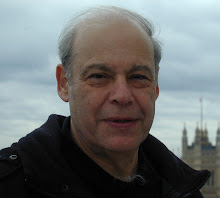.
You’re asking yourself: I’m a Senior Citizen; do I really need to exercise?
“Rest is precisely what aging people do not need” stated William Evans, Ph.D., of the U.S.D.A Human Nutrition Research Center on Aging at Tufts University about ten years ago. And it hasn’t changed since.
Starting in middle age, people gain fat, and lose muscle, strength, bone, and aerobic capacity. Their risk of heart disease, diabetes, high blood pressure and osteoporosis rises. While a healthy diet can help reduce these risks, exercise is at least as important. The single most important step to slow down the aging process is strength training. Many of us believe that we lose our ability to respond to exercise as we age, but nothing is further from the truth. You can strengthen your muscles as you age, and the improvement may even be more noticeable than at a younger age.
Women are at a special risk because they have less muscle mass to begin with, and they start to lose muscle strength more rapidly after 60. The Framingham Heart Study showed that half of women aged 65 or over can’t lift ten pounds. Muscles weaken rapidly after age 70. At age 20, 90% of the volume of the thigh is muscle. At age 90, it’s only 30% muscle, the rest is fat and bone. With weight lifting, muscle mass can be increased by 10%, but the increase in strength can be 200%. When women lose weight by dieting alone, they may also lose muscle and bone. With exercise and weight lifting, muscle and bone are preserved.
Dr. Steve Blair of the Cooper Aerobics Institute in Dallas has shown that inactivity is as risky as having a high blood cholesterol level.
Strength training: Lift a weight heavy enough so that your muscles will feel fatigued after eight or nine lifts. For a healthy 65 year old, that's about 20 pounds (60-80% of maximum lifting capacity). If you lift weights properly, it will not dangerously increase your heart rate or blood pressure. Weights should be lifted without holding one’s breath. Move slowly, take time to warm up and cool down, so that muscle stiffness is minimized. With exercise you can become more limber and increase your range of motion. Weight lifting promotes weight loss; the number of calories you burn increases with your muscle mass. So, the more muscle mass you build, the more calories you burn.
Aerobic exercise: While strength training is important, don't abandon aerobic exercise, which increases cardiovascular fitness, reduces blood pressure, increases HDL cholesterol (the "good cholesterol”), and reduces the risk of dying of heart disease, diabetes, and even colon cancer.
A reasonable recommendation today is that aerobic exercise be done at least three days a week for 30 to 45 minutes each time, and strength training 2 or 3 days a week.
What’s the reward? It’s very simple: Not only will you feel better about yourself, you’ll live longer. So what are you waiting for?

No comments:
Post a Comment